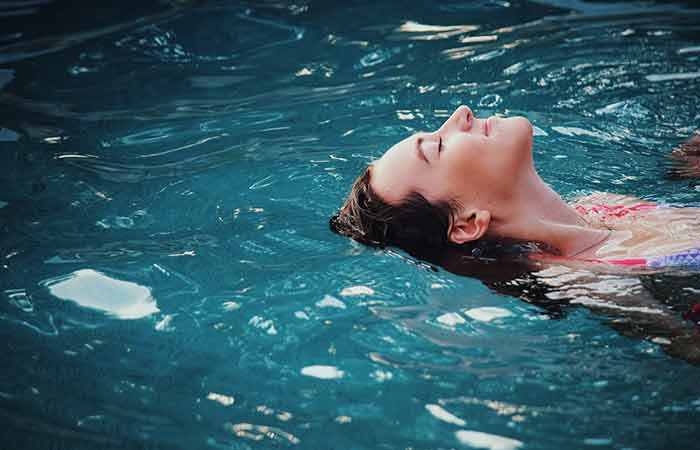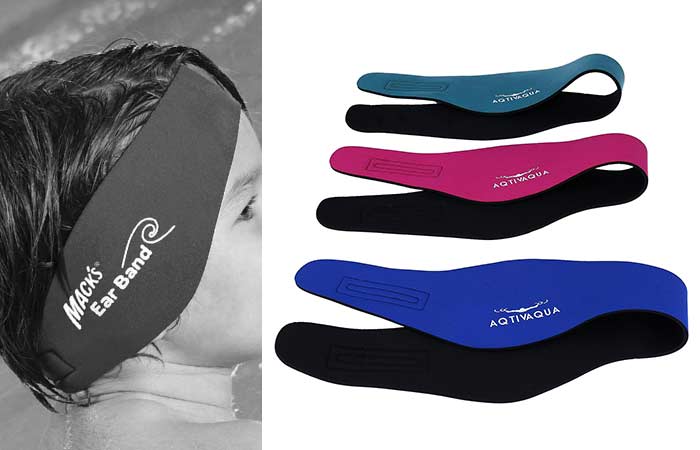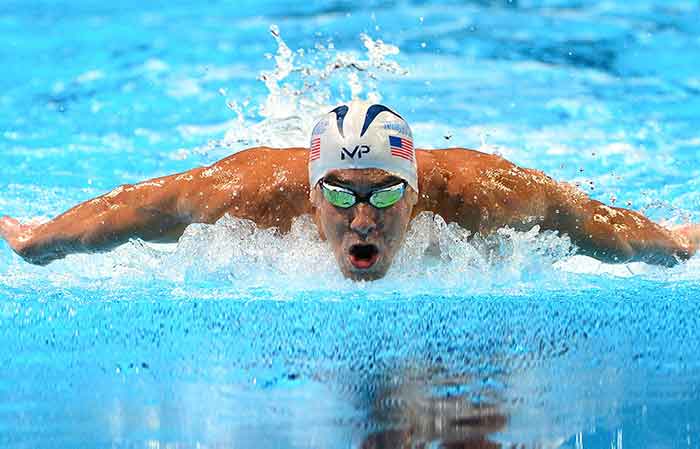Breaststroke vs Butterfly Swimming
Different swimming styles are used for different purposes given their primary differences. Among the most popular ones are the butterfly and breaststroke which have a few similarities and differences.
The main differences in these strokes come from the arm movement, the leg kick, form and speed. Breaststroke utilizes the whip kick while the butterfly uses the dolphin kick, breaststroke’s arm movement is underwater while for butterfly it is above the water. In terms of speed, the butterfly is faster and burns more calories
Both strokes require that you raise your upper body to breathe, good coordination, they are symmetrical and alternating strokes-no rotating. If you’re venturing into one of these swimming styles, you’ll need to learn its specifics to make the most of it. With most people starting out with the freestyle stroke, these two offer different challenges and learning curves.
Differences: Comparing the Breaststroke and the Butterfly
Following is a comparison table highlighting the common differences between these two popular swimming styles
| Butterfly | Breaststroke |
| Commonly swum by expert swimmers | Commonly swum by Beginners |
| Allow use of fins | Difficult to swim with fins |
| Longer recovery time between cycles | Shorter recovery time between cycles |
| Uses dolphin(fishtail) kick | Whip(frog) kick |
| Glide isn’t emphasized as such | Holding a tight line (gliding) is crucial |
| During the pull, arms are brought forward above the water | During the pull, arms are brought backward underwater the water |
| Arm pull provides most of the forward propulsion. | Kick is what provides the forward propulsion, rather than the pull |
| Works shoulder, arm, and abdominal muscles | Works more leg muscles in addition to the upper body. |
| Allows one-arm stroke | One-arm is almost impossible |
| Faster | Slowest stroke |
| Burns more calories | Fewer calories |
| Competitive stroke | Both recreational and competitive |
1. The Start of the Stroke
The start of both strokes is the same. When used in competitions, swimmers face the water, jump in then glide for a while before starting the strokes.
For the best results, the swimmers glide under the surface of the water either straight or with leg kicks to gain speed before starting the stroke.
Regulations are that you’re only allowed to glide for up to 15 meters before starting to stroke.
2. The Form and Position of the Body
The body moves in a wave-like motion during the butterfly stroke as this motion allows for power generation and the streamlining of the body.
The wave motion starts at the head followed by the chest region, the hips and the legs which finish off with the dolphin kick. It starts at the head again downwards.
For the breaststroke, the prone position assumed requires the body to move from a horizontal position to a periodic glide and back to the horizontal position.
3. Kicks (Leg Movements)
For the butterfly kick, the main leg movement is a dolphin kick. Basically, the legs are held together as they move up and down with the feet almost straight out.

You ensure the legs work as one large fin for the best propulsion.
You can enhance your dolphin kick with fins such as the Finis Wave Monofin.
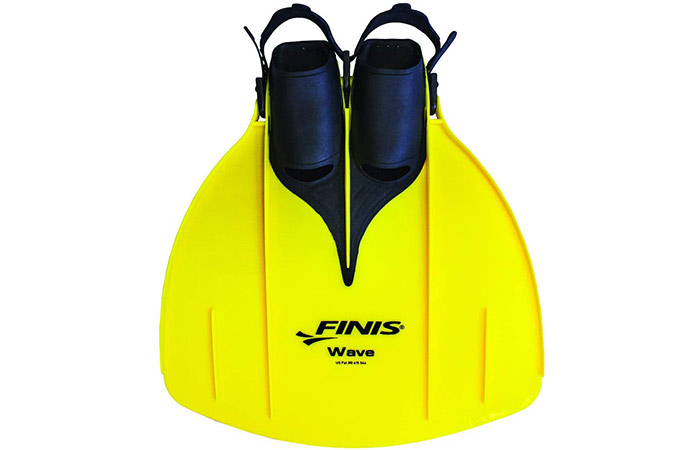
The frog or whip kick is the leg movement utilized in the breaststroke. From the initial position, legs stretched out backward, the feet are moved together towards the posterior, with the knees together, the legs are moved elliptically back to the initial position.
It is this thrust from the legs that provide forward propulsion. The right time to perform the leg kick is at the end of the breathing cycle. Unlike butterfly and other strokes, performing the whip kick with fins is almost impossible

4. The Movement of the Arms
The arm movements in the butterfly stroke move in a symmetrical manner such that they trace an hourglass pattern under the water.

First, they start off extended forwards then you pull them down towards the chest then outwards towards the hips. You then move them from the hip area above the water to the extended position forwards.
The arm movement in breaststroke starts with an outsweep, insweep, and recovery. From the streamline position, the palms turn out and the hands separate to slightly past shoulder width. The hands then point down and push the water backwards(insweep).
At the end of the insweep the hands come together with facing palms in front of the chest and the elbows are at the side at the body ready for the recovery phase, where the hands are moved forward again into the initial position underwater.
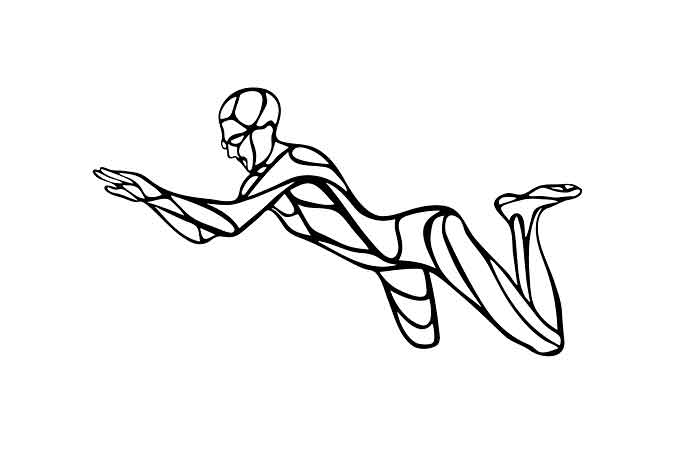
5. Breathing Technique
For the butterfly stroke, the breathing occurs during the recovery phase of the arms as the chest and head come out of the water in preparation for the next phase.
Given that you’ll need more energy to lift the head and chest above the water, you’re better off alternating the breathing cycles with non-breathing ones to move faster.
For advanced swimmers, the breathing for the breaststroke is almost similar to that of the butterfly as they entail almost similar hand motions. As the hands reach their lowest point, the head will be lifted above the water for breathing.
For both strokes, the breathing out should occur continuously and under the water. This makes it easy to focus on the strokes rather than holding your breath and getting distracted.
For beginners, that is in breaststroke, the head is always high to ease breathing. Breathing underwater comes in once you’ve mastered the stroke.
6. The Muscles Involved
Given the movements of each stroke, most of the muscles involved are the same. However, there are differences primarily in the movements of the legs and arms
The whip kick in the breaststroke utilizes a lot of individual leg muscles, especially in the thigh and ankle.
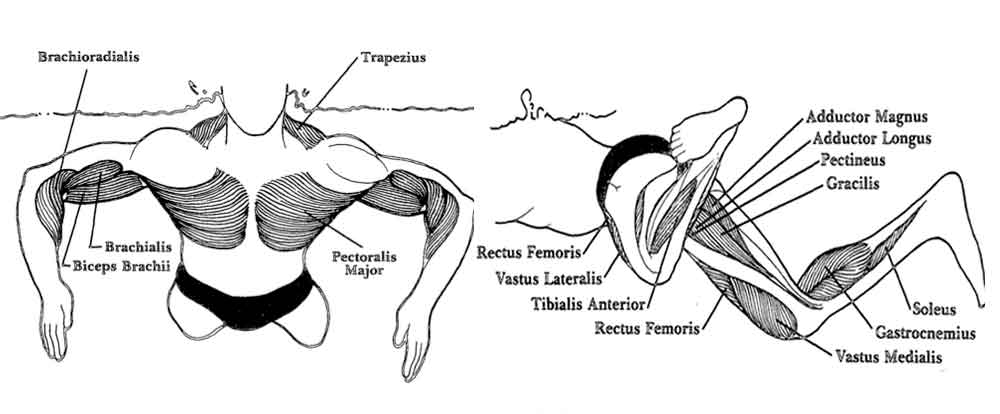
On the other hand, the dolphin kick of the butterfly stroke makes use of hip muscles more than the breaststroke.
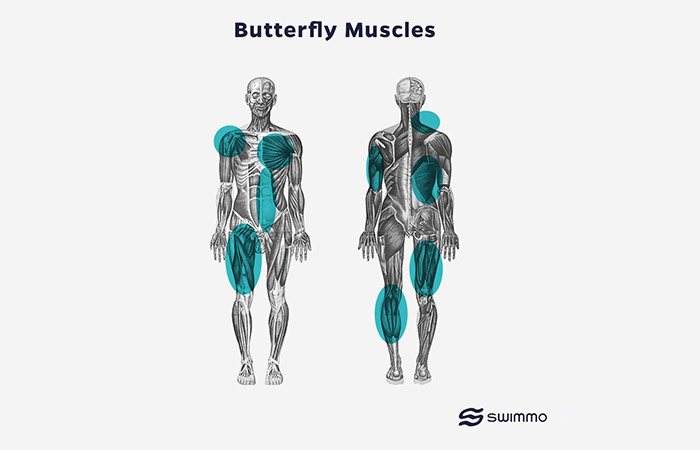
Both utilize shoulder muscles and the muscles below your arms since one of the main motions of propulsion is the movement of the arms above and below the water.
7. The Energy Spent (Calories Burned)
Of the two swimming styles, the butterfly is the tougher one. While it’s faster than the breaststroke, it requires a lot of energy to pull it off.
As such, the butterfly stroke burns around 800 calories per hour for an individual weighing 155 pounds. On the other hand, breaststroke burns about 704 calories for the same period of time and body weight.
8. The Speed Attained
The butterfly style is second only to the freestyle stroke in terms of speed. The breaststroke, however, is the slowest of all swimming styles.
While actual figures haven’t been taken, the butterfly stroke’s peak speed often surpasses that of the freestyle stroke.
However, this speed drops significantly during the recovery phase of the stroke leading to an average speed slower than that of the freestyle.
9. The Ease of Learning
The butterfly stroke, while one of the fastest, is also one of the hardest to learn. The reason for this is that you have to learn the undulation of the body which is a wave-like motion. This hinders a lot of people from mastering it to attain the maximum speed.
Besides that, the dolphin kick is a harder kick than the other types of kicks in swimming like the flutter or whip kicks. These aspects make it tough to learn and perform at the peak.
On the other hand, the breaststroke is slow but quite easy to grasp the basics and perform better with it. Given the same period of time, a swimmer will master breaststroke faster than they would the butterfly stroke.
10. Their History
The breaststroke is among the oldest swimming styles as it’s traced as far back as the stone age where the early man painted swimmers on cave walls doing this style. On the other hand, the butterfly stroke was originated in the 1930s by the Australian swimmer Sydney Cavill.
Similarities
- Both are symmetrical and alternating strokes
- You raise the head to breath although you rise higher on breaststroke
- Both are the hardest strokes to master
- Two-hand wall touch during turning
- Both require good coordination
- Both have a gliding element
- Chest and the torso does not rotate
- Both strokes are slower than backstroke and freestyle
Breaststroke or Butterfly-Which Style is Better?
There isn’t one specific swimming style you can say is the best. You then must consider the aspects above to determine what works and doesn’t work for you. In terms of difficulty, the butterfly stroke is the more difficult of the two.
The arm movement can result in serious fatigue to your shoulder muscles especially for beginners or seasonal swimmers.
However, if you’re going for speed, you’ll need to learn the butterfly stroke. On the other hand, if you’re a rookie in swimming and you just mastered the basics, you’re better off starting with the breaststroke style.
It’s much easier to learn and provides the best opportunity at putting into practice the basics of swimming such as breathing and others. However, breaststroke’s whip kick is considered an unnatural human movement. It may cause knee problems to some swimmers.
Further Reading
Following is a list of articles with more swimming information and other water sports
Swimming Strokes/Styles
- Different Types of Swimming Strokes, Styles & Names
- What is Sculling in Swimming? How to do it
- How to Tread Water- Techniques, Benefits & Exercises
- How to Swim Freestyle: Technique, Tips & Drills
- How to Swim Breaststroke: Kick, Pull, Form, Drills & Tips
- How to Swim Elementary Backstroke- Technique, Drills & Tips
- How to Swim Sidestroke-Technique,Trudgen &Combat Drills & Tips
- How to Swim Backstroke-Technique, Drills & Tips
- How to Swim Butterfly: Technique, Drills & Tips
Swimming FAQs & Ideas
- How Many Calories Does Treading Water Burn?
- Can you Swim with Contacts in the Ocean/Pool?
- Can you Open your Eyes in the Salty Ocean or Chlorinated Pool Waters?




